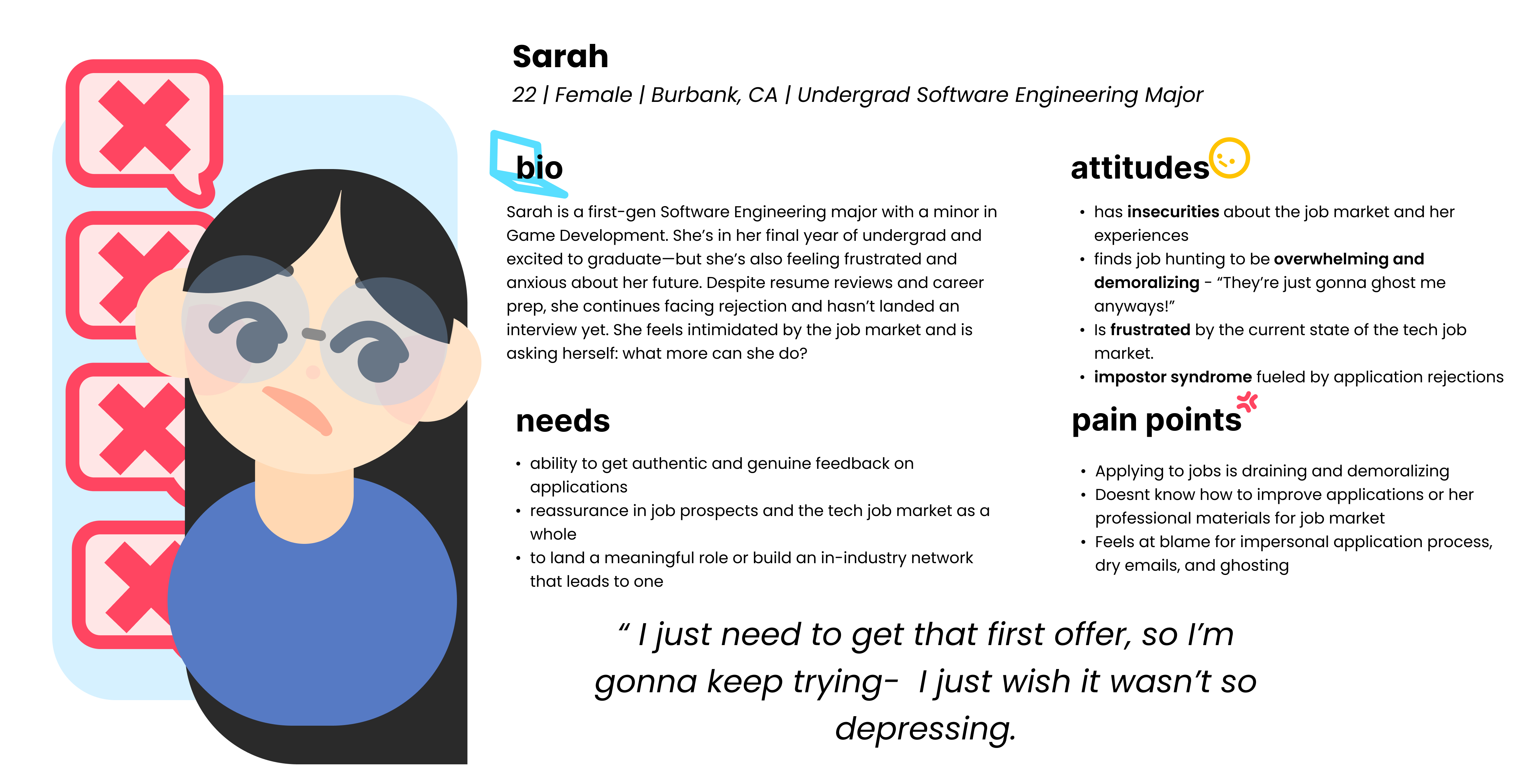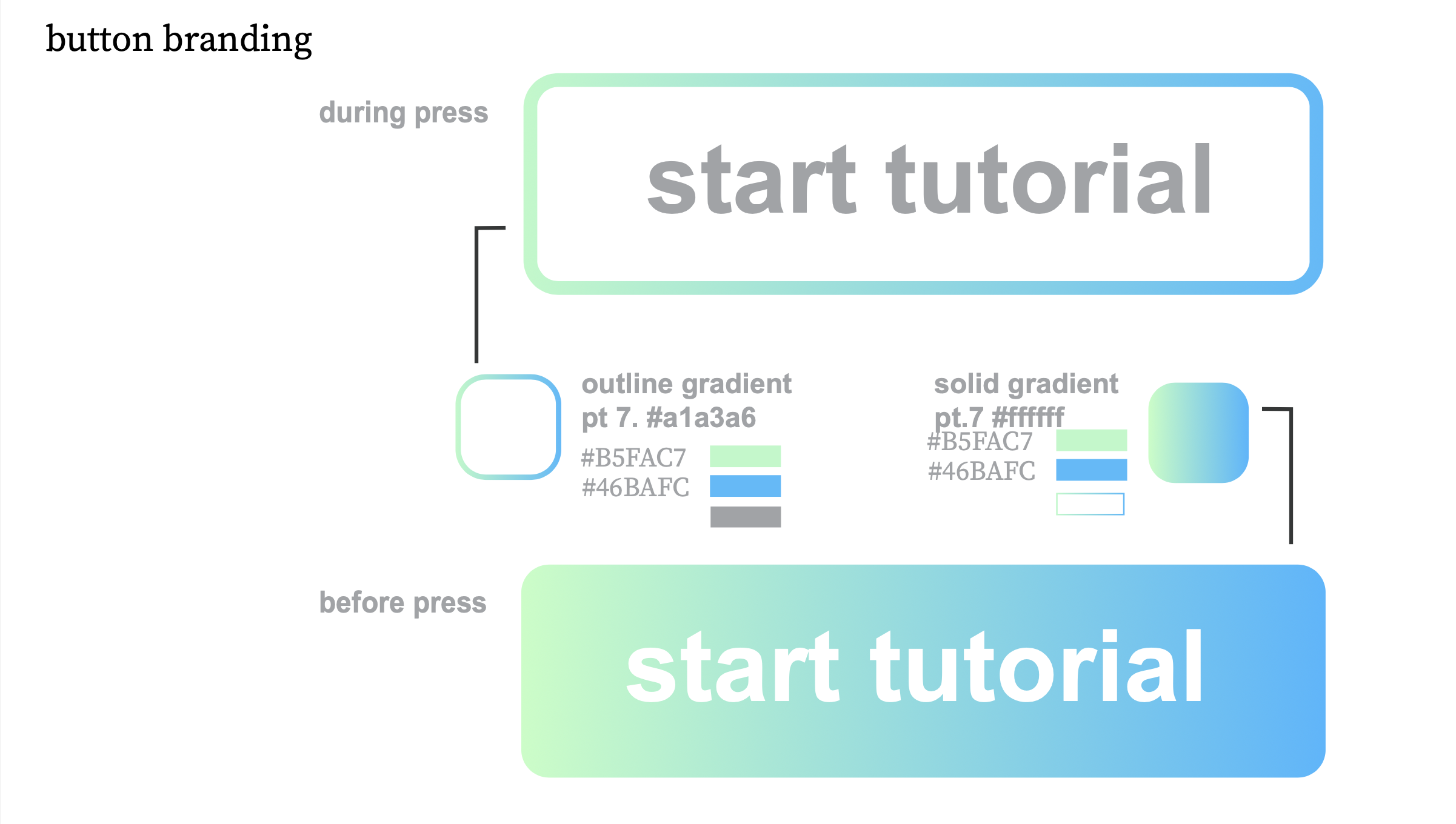Summary
Skillmate is a UX case study exploring how we can support students and early-career professionals through a more empathetic job search experience. This project was completed as a capstone for a software design course and explores the emotional challenges of rejection, burnout, and misaligned job filters.
exigence
In the reality of the job market today, applying for positions and getting hired has turned into a job in itself. More
and more applications demand hours of work, personalization, and effort. The process has become frustrating and
anxiety-inducing with the demands of extensive customization, personalization, and requirements.
On the flip side, employers face similar challenges in identifying suitable, competent, and promising candidates from
such a large applicant pool.
This mentally exhausting, time consuming, and morale draining process indicates a larger
issue, in the inefficiency and faults in the role-to-recuiter-to-applicant relationship.
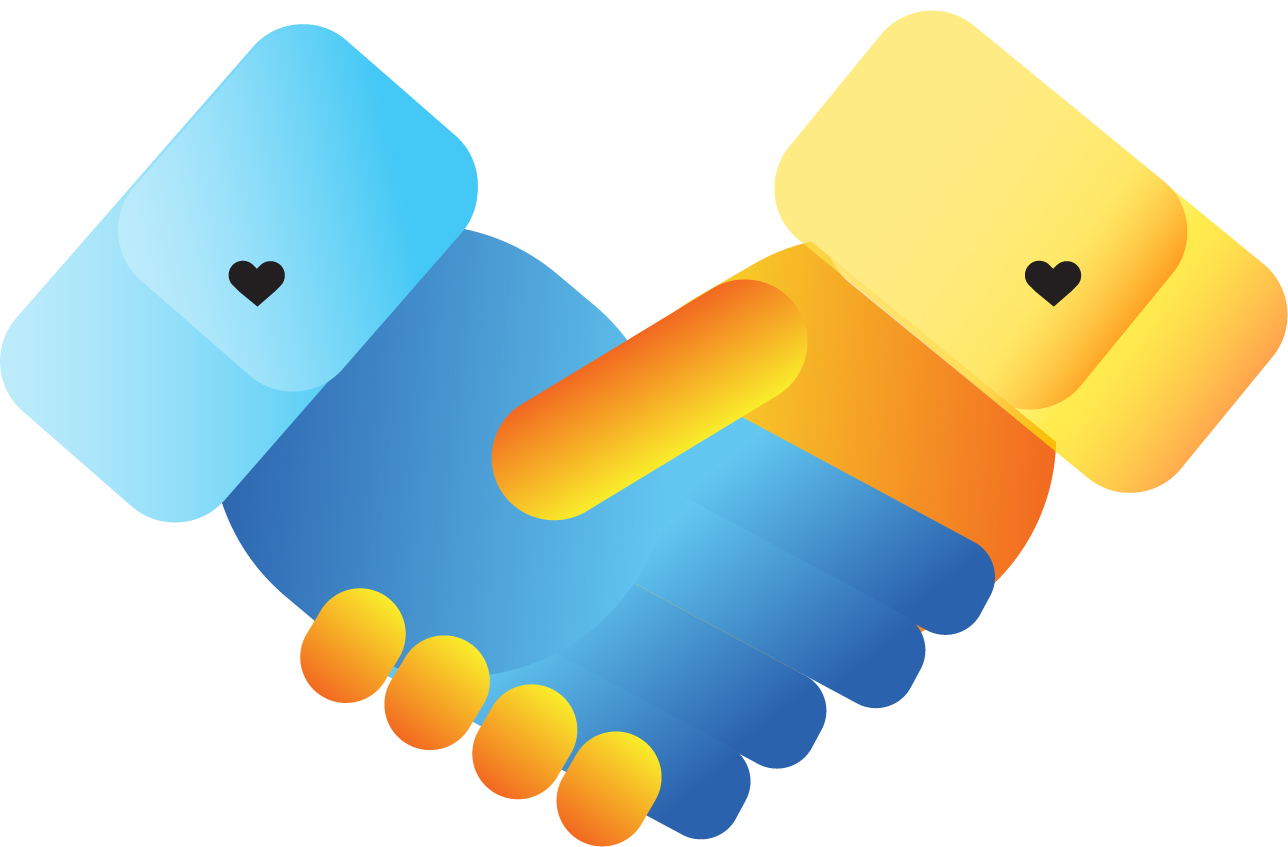
project
Skillmate
a digital product that empowers students to pursue their dream roles by improving the job search experience
info
UX/UI Designer & IOS Prototyper
1 UX Designers, 2 IOS Developers
& 1 Data Scientist/ Fullstack Developer
Final Project Submission; Software Design
Figma, Adobe Ilustrator, X Code
empathize
understanding, analyzing, & identifying user needs & behavior
To understand the user and target audience we collected data by conducting informal qualitative research
through
informal interviews, and contextual queries of our fellow peers.
After our inital investigation - we identified three key themes and insights:
Burnout
applications are time-consuming, often requiring tailored responses, resumes, and cover letters.
users are tired! theyre exhausted from the process, but they need to find a role!
Ghosting
many applicants send in applications that they never hear back from
its demoralizing, especially when i'm putting so much work in! at least send me a copy-paste rejection
Narrow or Misleading Filters
Roles want very specific qualities and experiences!
I'm graduating and applying early career- why is everything a minimum 5 years of experience?
user personas
opportunity
How might we improve the job search experience to reduce emotional harm and foster user confidence, persistence, and professional growth?
define
our proposal
Skillmate is a supportive and streamlined platform that reimagines the job search experience for students and early-career professionals. Unlike traditional platforms that often overwhelm users with algorithmic noise, Skillmate prioritizes clarity, human-centered support, and mentorship-based matching.
empathy,transperency,community,compassion
ideate • branding
During the ideation phase, we transformed our research insights into actionable design direction.
With a focus on
highlighting student perspectives, we aimed to produce features that reduce overstimulation and feelings of being
overwhelmed, provide clear and minimalistic pathways for user experiences, and promote self-led and
community-supported empowerment.
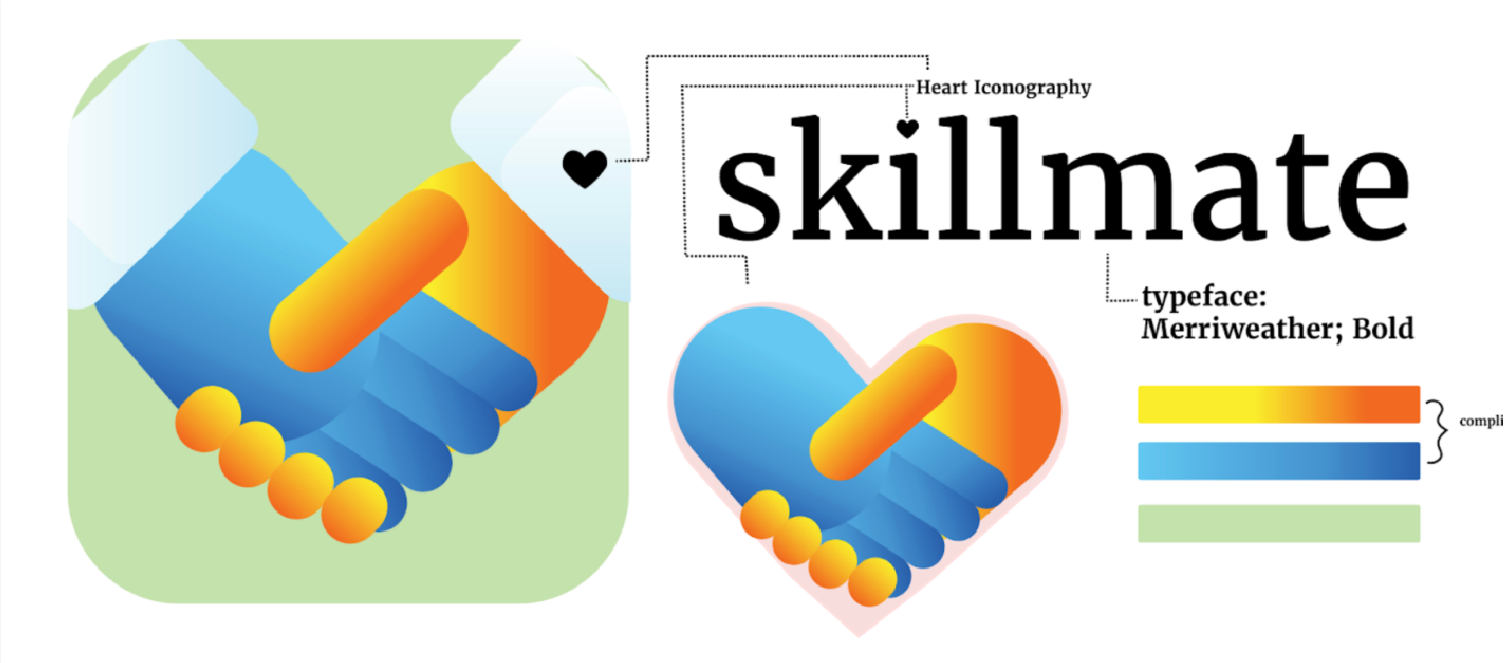
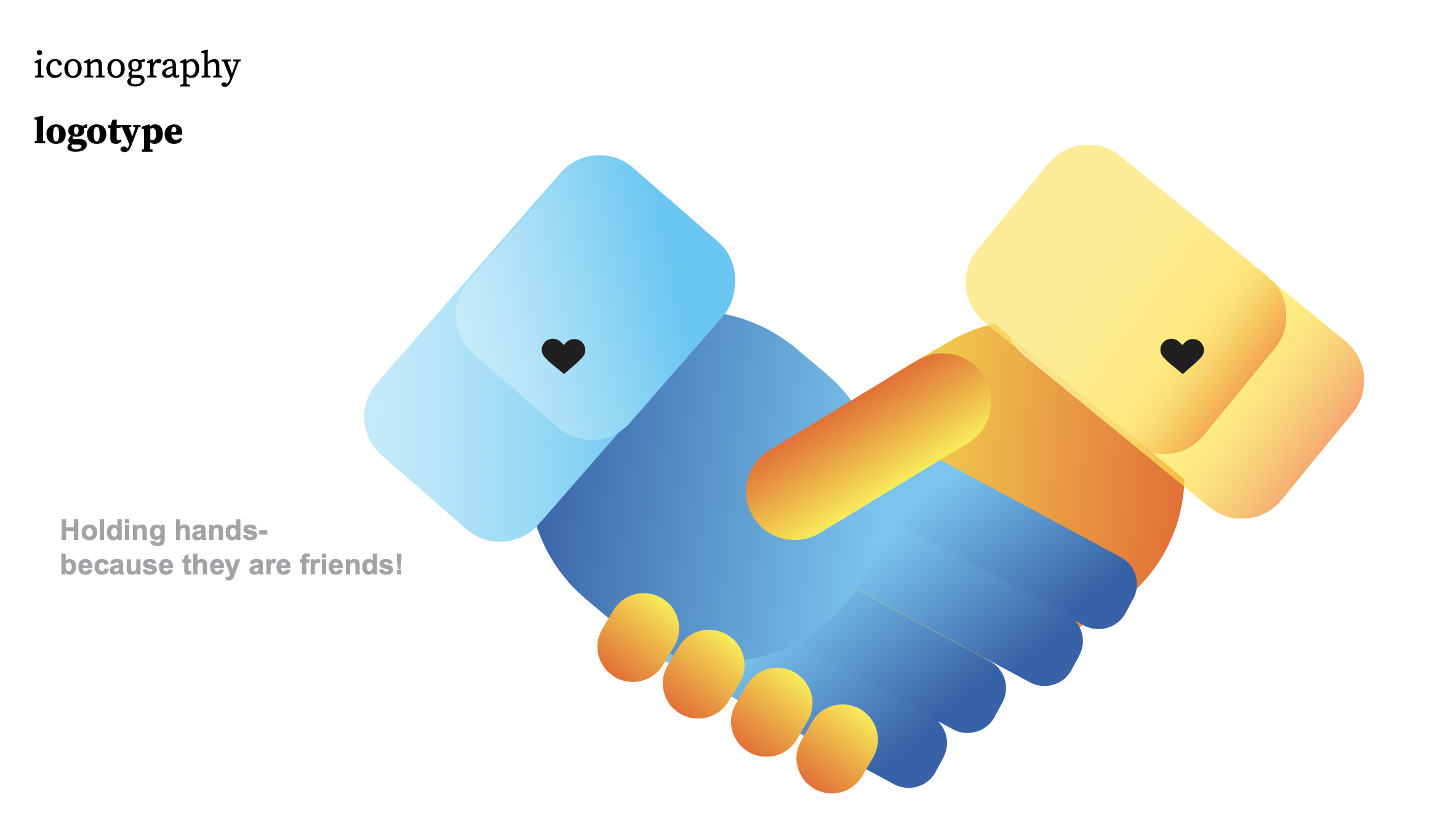
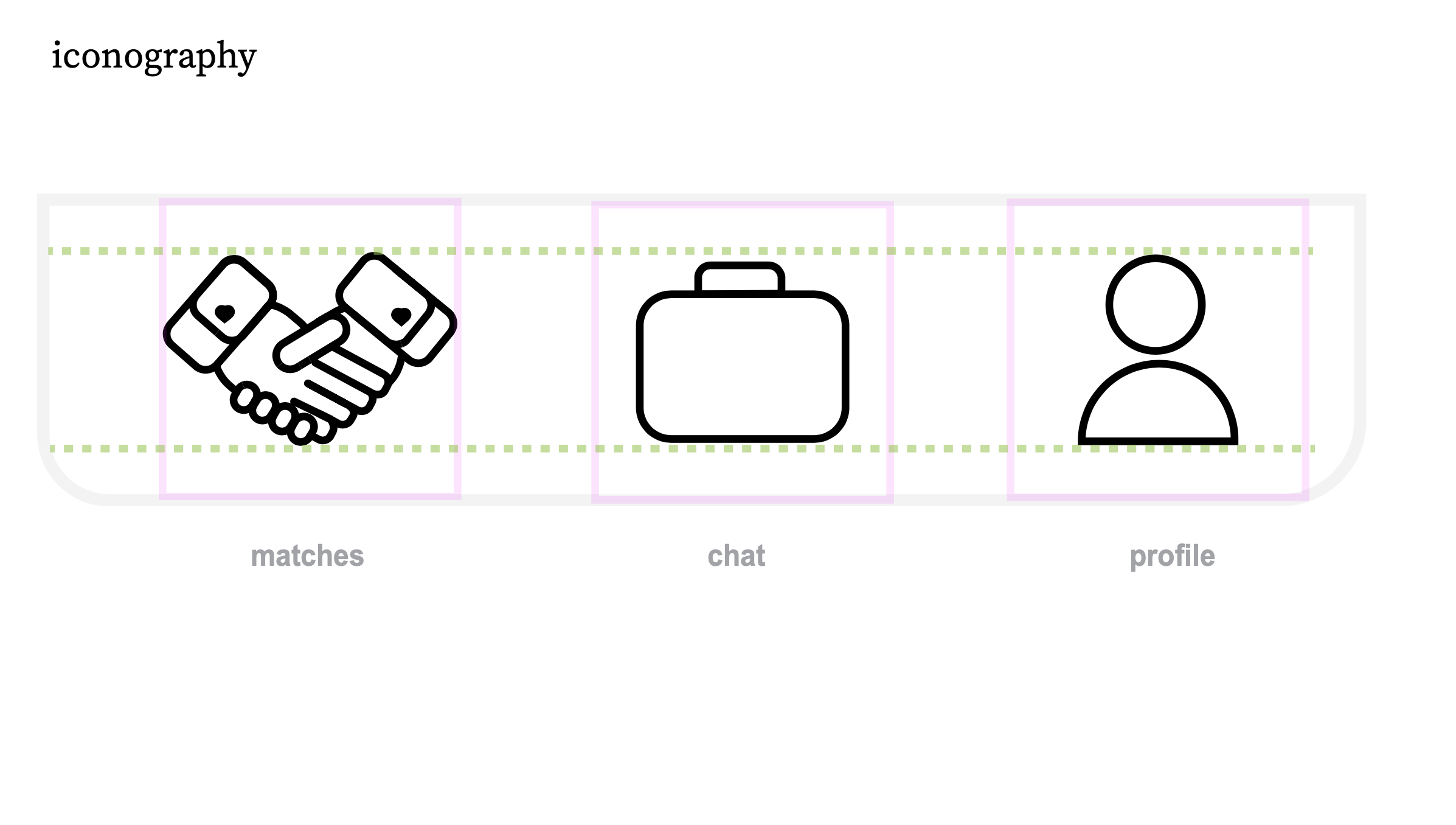
Our visual identity centered around warmth, clarity, and mutual support. The heart iconography emphasized connection and compassion, while the hand-holding symbol stood for professionalism and authenticity. We selected a bold serif typeface (Merriweather) to convey structure, paired with a color scheme of complementary orange and blue tones — chosen to evoke both confidence and calm.
prototype •interaction design
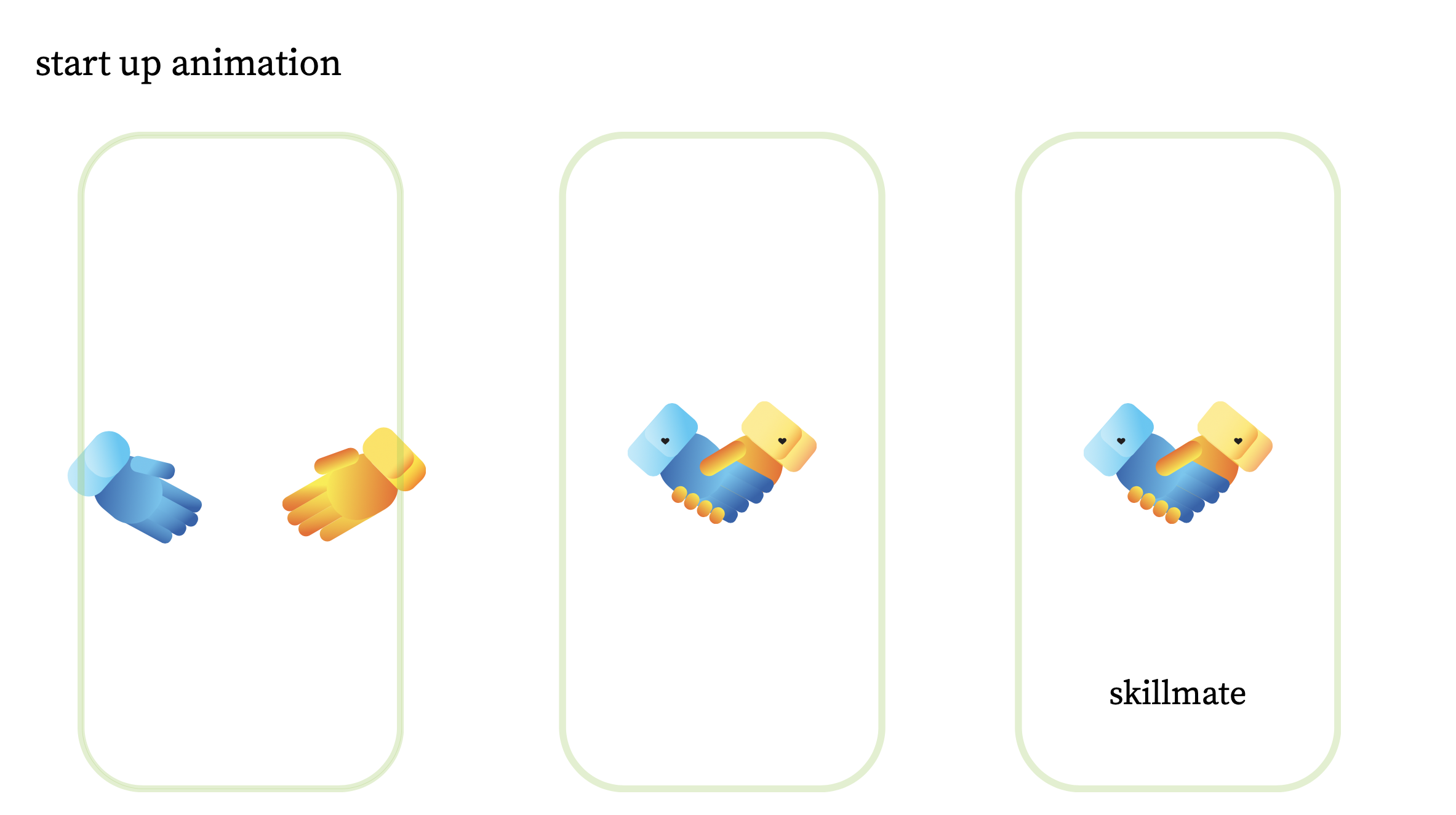
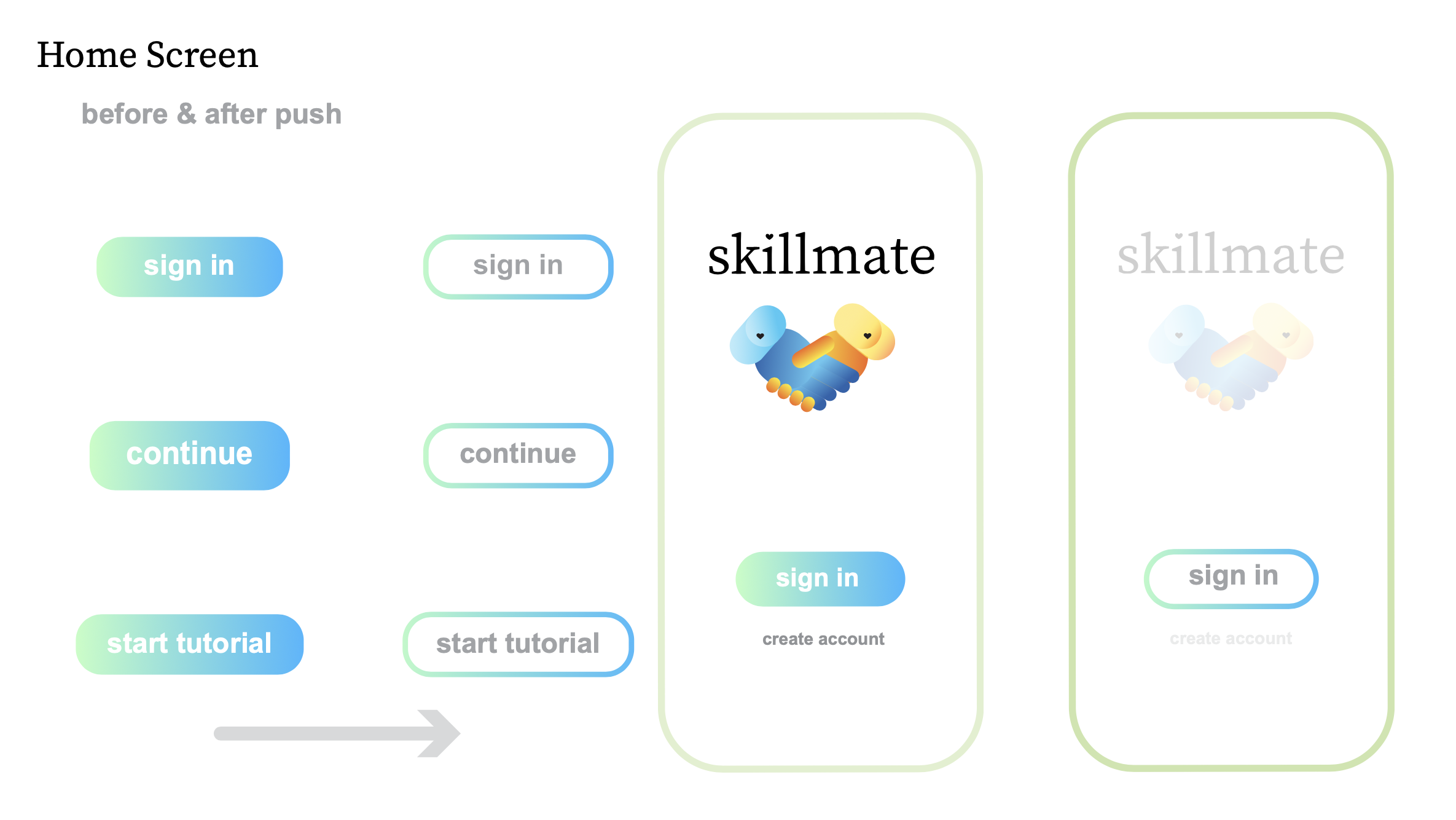
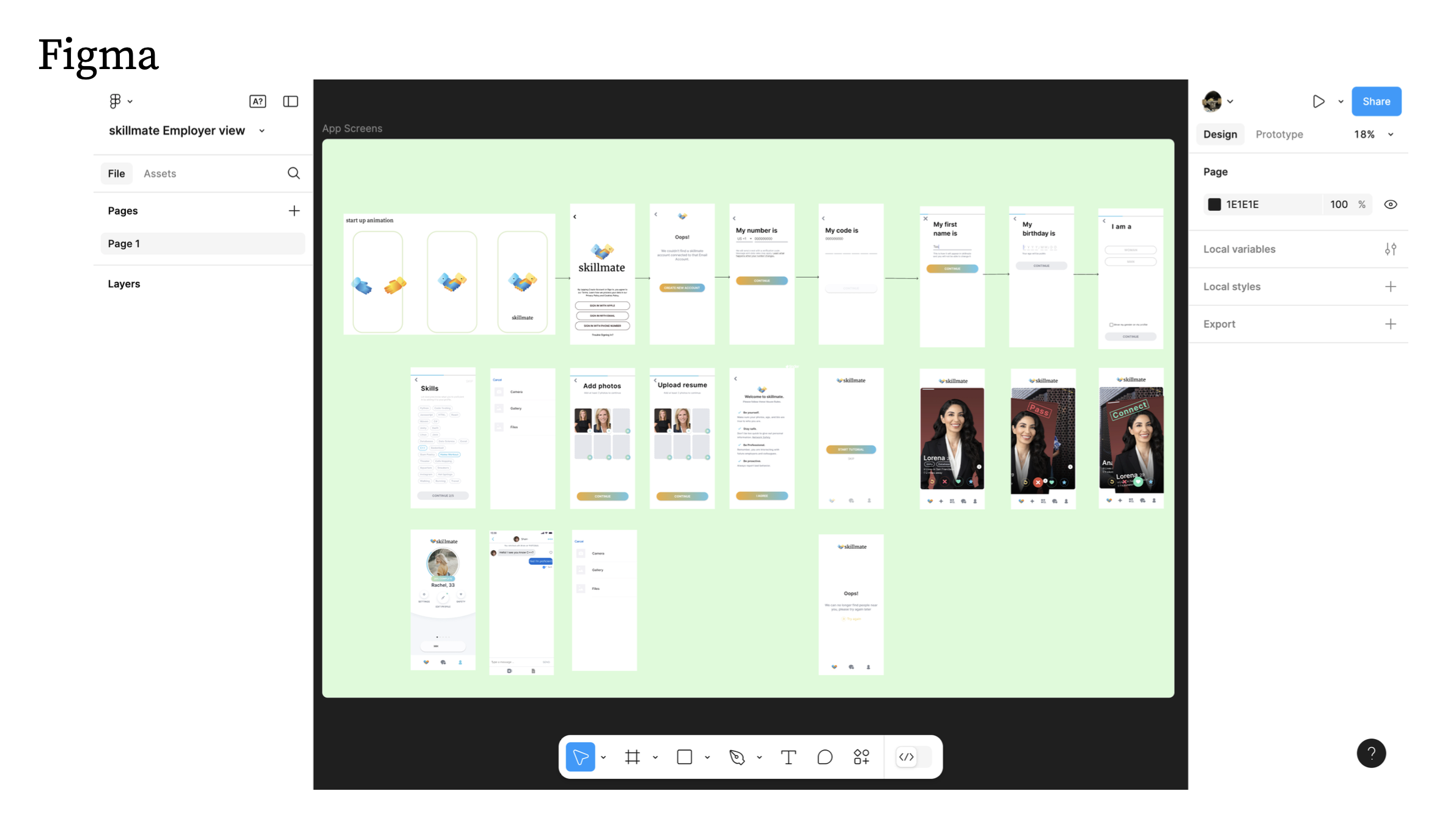
retrospective
designers commmentary & project takeaways
Getting to work on this project was a very rewarding experience, as it was one of the first times I'd ever been trusted with project branding, user research, and ux/ui development. While we were only able to begin the iOS prototype before the end of the project milestone timeline, the user research and branding created a strong foundation for future developments. During the project, one of my main challenges and responsibilities lay in developing the iOS prototype UI- however due to time constraints we prioritized the early phases of the design process to ensure we had a meaningful solution, and a clear direction for future iterations.
what's next
- complete additonal workflows in Figrma for product use ( recruiter interface, social interaction)
- Build and test a functional iOS prototype
- Conduct remote usability testing with 5–8 students
- do it again!
final takeaways
1. User Experience Research can be quantitative.
For our research methods, we conducted several testimonio-style interviews and created affinity diagrams to identify
common themes across users’ experiences with job and career hunting.
We chose this qualitative approach because it
allowed us to center lived experiences and foster more authentic dialogue — something we felt more
structured surveys or scripted interviews might lack or discourage.
While the testimonios gave nuanced insights, incorporating a complementary quantitative method
such as a short user survey — could have helped us validate trends and reach a wider range of perspectives. Due to
time constraints, we opted to focus on qualitative depth, but we recognize that combining both methods would have
provided a more robust foundation for our design decisions.
2. Surprise! Project- directed learning.
The programming and development portion of this project was definitely a tossed-in-the-deep-end moment for me as before this I had zero experience with swift, XCode, and experimenting with motion design and animations. At first I remember feeling like I was way over my head, but diving into Swift navigating Xcode taught me a lot through hands-on trial and error. I leaned into tutorials, documentation, and community resources to learn as I built. I was definitely pushed past my comfort zone, but the experience was very rewarding.
3. The Power of Branding. It's more than just looks y'know!
Through creating this project, I learned just how important branding really is— not just in terms of visuals and making something not ugly but in shaping how users feel about a product. Building the brand from scratch taught me that tone, color, and even fonts - all contribute to trust, clarity, and emotional connection. It’s not just about making something pretty; it’s about creating a cohesive identity that users can relate to and remember.

